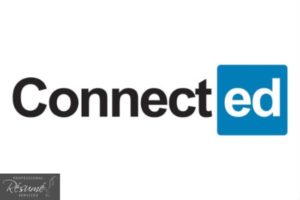Working on your personal brand is more important now than ever before. Executives have typically considered their c-level personal branding as being associated with and representing the company they work for. However, the notion has shifted into marketing yourself as a person rather than as a part of a company.
When you work for a company, you still need to brand them as part of your job. The key is to also know when the right time is to work on yourself as well. Not doing so could hurt your long-term executive career prospects. Here are a few ways executive personal branding affects your executive career.
Establish Yourself as an Expert
When you focus on c-level personal branding, you can establish yourself as an expert in a particular industry, rather than for a specific company. Portraying yourself as the go-to executive for many different issues can be very valuable for your career. People need someone to rely on, and if you have the expertise, branding yourself as the person they can rely on can define you in that way.
Learn More About Yourself And Your Goals
Executive personal branding goes beyond writing an effective resume. It’s easy to portray yourself in a different light when you’re representing a company, even when you know it’s not the true you. How you brand yourself could give some insight into your own self, your value, worth and what you’re capable of.
Get Feedback From Peers to Improve Your Brand and Career
One of the best ways to improve c-level personal branding is to always seek feedback from colleagues and peers. You may believe you are taking all the right steps to market yourself appropriately, but you don’t know how you are perceived by others unless you ask someone you trust. Most executives won’t volunteer this information to you, so asking for feedback could open your eyes to some changes you need to make when representing yourself.
Link Your Online Brand With Your Personal Brand
You could be hurting yourself if the person you say you are online doesn’t match the person you are in real life. When you optimize your LinkedIn profile, don’t just write things to make yourself sound good. People will read your LinkedIn profile and have a general perception about you. That perception has to come close to matching in real life, so be sure the two are linked closely and accurately.
At Professional Resume Services, we always work with executives wanting to improve their personal brand. We understand the importance of personal branding when it comes to career advancement, job searching and other aspects. Feel free to contact us if you need any tips or advice on branding or any other aspect of your executive career.
After spending hours on your resume, the easy thing to do is just copy and paste the information over to your executive LinkedIn profile. While this makes sense on the surface, since LinkedIn provides the same type of information as your resume, it’s one of the worst things you can do.
Recruiters do diligent research on candidates and look at many different platforms to learn as much as they can about you. If they see your resume copied over to your LinkedIn profile, it shows your lack of creativity and potential disinterest in finding a new job. While there are some similarities between your resume and LinkedIn profile, there are many more differences between the two.
What to Include on Your Resume
The best resume writing service can help you pick out the biggest points and facts from your career up to this point and display them on your resume. This is the document where you need to be cut-and-dry by highlighting specific experiences and accomplishments. You shouldn’t have a lot of text next to each bullet point on your resume, because you need to remember a recruiter spends an average of about six seconds reading any given resume and doesn’t want to read a bunch of fluff.
What to Include on Your LinkedIn Profile
Your executive LinkedIn profile gives you the opportunity to tell the backstory on those short bullet points you have in your resume. You don’t have to tell your complete life story (and it’s recommended that you don’t), but you can give a little background to put your achievements into perspective.
When you’re working on your LinkedIn profile development, you also need to be more general instead of targeted. Your LinkedIn network is full of diversity, so you could be missing out on opportunities by being specific about your role and interests. This goes against how a resume is crafted, but it’s important to make the distinction.
Always Separate The Two When Job Searching
When you’re searching for an executive position, you never know if your resume or your executive LinkedIn profile will be viewed first by a recruiter. The two are similar only because they are tools to help you land a new job. The content may be similar, but it should be displayed very differently. Keeping the two separate and distinct will help your job searching efforts tremendously.
At Professional Resume Services, we work every day to help executives with LinkedIn profile development and resume writing. It’s difficult to wrap your mind around how different these two are, but we are here to guide you on the right path. Feel free to set up a time to talk if you have questions or need assistance with any aspect of your executive resume or LinkedIn profile.
 Experienced executives have a lot of knowledge that may be beneficial to many other people. If you have a good amount of experience and have decent writing skills, you could enhance your career even further by starting a blog. Even new executives who may not have a lot of experience, but have a lot of ideas, can benefit from blogging.
Experienced executives have a lot of knowledge that may be beneficial to many other people. If you have a good amount of experience and have decent writing skills, you could enhance your career even further by starting a blog. Even new executives who may not have a lot of experience, but have a lot of ideas, can benefit from blogging.
Blogging usually isn’t something executives think of when it comes to boosting c-level personal branding. The benefits are proof enough for you to consider starting one, though.
Blogging Can Get You Noticed
You’d be surprised at how many executives like you search for different articles to help their craft. If your blog offers what they need, you may start building a nice collection of subscribers who want to read your material. Being noticed online in a positive light is one of the best ways to enhance your career.
You Could Build Your Network Through Blogging
You may already have hundreds of connections through your LinkedIn profile, but you can expand it even further with a blog. Consider putting the link to your blog in your LinkedIn profile as well, so your current connections know you have one. You never know who will read your material online, so it’s always best to put it out there as much as possible.
Blogging Will Put Your Name in Search Engine Results
If you’re actively searching for a job and have applied to several places, the first thing those companies will do is search for your name. Your LinkedIn profile is important to them, but they also want to see what else is on the Internet about you. When links to your personal blog with insightful topics and advice come up, you’ll have a better shot at landing an interview compared to someone who doesn’t show up in the search results at all.
Use Keywords and Write About Relevant Topics Naturally
Writing a blog is different than writing an executive bio. Use your blog as a chance to show your casual, laid back side rather than the uptight business professional you have to be every day at work. Incorporate the keywords you have to use throughout the day and talk about those topics as well, so you can relate to people in your industry. Being as natural as possible on your blog will be a relief to you and your readers.
At Professional Resume Services, we look for every way imaginable to boost your career. Whether it’s optimizing your resume, helping you incorporate your blog into your LinkedIn profile or writing your executive bio, we can help guide you in the right direction. Feel free to contact us at any time for advice on blogging or any other topic related to your career advancement.
One common mistake many executives have is allowing their network to go stagnant. It’s easy to do when you have a stable job, have no intentions of leaving your job and are constantly too busy to reach out to your connections. However, it’s important to keep a solid active network even when you’re not on a job search, just so your name and brand are still at the top of people’s minds.
The reality is people have to rebuild their executive network all the time. You could begin with enhancing your LinkedIn profile development, but most of the time it’s best to just jump right into rekindling relationships you’ve had in the past with other executives.
 Start By Rebuilding Relationships
Start By Rebuilding Relationships
Any time you try to rebuild a relationship because you fell out of touch, those other people likely know the reason. Even if you are getting back in touch because you’re looking for a job, it doesn’t mean you have to explicitly state your intentions. Ask them about how their life has been since you last spoke. Talk about family, activities and their career, but try not to make the conversation about you.
Acknowledge and Apologize for Losing Touch
Before you really get started rebuilding a relationship, acknowledge to them that you lost touch and apologize for it. Starting off with this approach will make the other person feel the same way and will likely apologize as well. Everyone is busy, so it’s tough to keep in touch at all times.
Don’t State Your Employment Position Unless Asked
If you reach out to a contact over LinkedIn, they will have likely looked at your executive profile to know your employment position. Even though you may be actively looking for a job, you don’t have to explicitly state it to your contact. The worst thing you can do when rebuilding your executive network is make the other person feel bad or guilty during a conversation.
Ask for Expert Advice Rather Than Job Recommendations
Your executive profile should state your job status, but you shouldn’t restate it to your contacts when rebuilding your executive network. If you feel like you need to tell them about your situation, then ask for their advice on finding a job, rather than explicitly asking for recommendations. People are much more willing to offer their own advice to you rather than going out of their way to help you find a job.
Professional Resume Services understands the importance of building and maintaining a solid executive network. With our professional resume writing service, you’ll be able to put together a solid resume to use for networking, applying for jobs or handing directly to a recruiter. If you need assistance or advice when rebuilding your executive network, don’t hesitate to reach out to us.
Search Engine Optimization (SEO) has many different functions and benefits. You can either greatly benefit from SEO when you’re searching for an executive job, or you could fall way behind the rest. Being discovered is one of the most important things in a job search today. You may have a great LinkedIn profile, but if you don’t have the right keywords on your profile, recruiters won’t be able to find you. Here are some tidbits about SEO you should know about so your job search is affected by it in a positive way.
 What Does Search Engine Optimization Accomplish?
What Does Search Engine Optimization Accomplish?
When recruiters search for candidates for an open executive position, they will use certain keywords in their search engine. SEO works to deliver the most relevant results based on those keywords. Hence, it’s important for you to know which keywords should be used throughout your executive profiles on each platform you use online.
If you’re somewhat unfamiliar with SEO, you can’t just stuff your LinkedIn profile with keywords and expect to be discovered. In fact, this will go against you for SEO purposes. You need relevant information about yourself to go along with the keywords sprinkled in here and there.
Use The Right Keywords
The best place to find the proper keywords to use would be in the company’s job posting or on the company’s website you’re applying to. Most of the phrases and keywords have to do with certain expertise they’re looking for, so you should be able to fit them in naturally if you possess those qualities.
Place Your Keywords Appropriately
For SEO purposes, you should put an emphasis on having your keywords at the top of your page, whether it’s a personal blog, LinkedIn profile or any other online executive profiles you have. Once you develop your profile or online resume, it wouldn’t be a bad idea to have an expert check your page for SEO so you can maximize your chances of being discovered.
Proof Everything Thoroughly
It goes without saying, but you should proof anything you put online multiple times. Typographical errors or poor grammar not only looks bad for your c-level personal branding, but it can also hurt your job search from an SEO perspective. This is especially true if your typo comes in an important keyword, so be sure to proof your profiles thoroughly and have a second set of eyes look at them as well.
Professional Resume Services offers expertise in the complexities of SEO. We can fully optimize your LinkedIn profile to match the branding you strive for in your executive job search. If you need any assistance or advice regarding SEO and your job search, feel free to contact us at any time.
When many people think about building a brand, they think about actual companies promoting their brand to drive business. However, executives today have to build their own personal brand as well. Building your brand online can take a significant amount of time and effort, and it won’t happen overnight. Your online brand is how people perceive you in real life, so it’s worth taking c-level personal branding seriously. Here are some of the best ways you can build your brand online.
Be Active on Social Media, But Not Too Active
Social media is great for building your executive brand, but it can also come crashing down in a hurry if you aren’t careful. You also want to limit the amount of platforms you use to just a few so you don’t spread yourself too thin. Having too many social media accounts to manage can become overwhelming very quick.
When it comes to your level of activity on social media, you always want to keep your brand in mind. Any time you think about posting something, consider whether it hurts or helps your brand. By considering this every time, you’ll manage your level of activity and only post relevant items reinforcing what you want to be known for.
Embrace LinkedIn
Having a strong executive LinkedIn profile is possibly the best way to build your brand online. One of the first places recruiters go to find executives is LinkedIn. If your LinkedIn profile needs some serious updates, you may consider looking into a service to help you. You definitely won’t be able to build your brand online the right way if you don’t use and embrace LinkedIn.
Use Strategic Keywords to Get Discovered
Keywords on your LinkedIn profile or other online platforms can help you get discovered. This also means you have to be extremely careful about what you post online. There is no separating personal matters from business matters online, so everything you say is tied to your overall brand.
Always Reinforce What You Want to be Known For
Every executive has unique qualities, including you. When you’ve determined what those qualities are, emphasize them on your LinkedIn profile, your resume and anywhere else. This reinforcement can help with your c-level personal branding and help you get recognized by the right people and companies.
Professional Resume Services thrives in helping people build their brand online. Whether it’s updating your executive LinkedIn profile, optimizing your resume or brainstorming new branding strategies, we are here to help. Feel free to contact us at any time for assistance on building and maintaining your brand online.
LinkedIn offers so many features, but it can be difficult to know which ones to use and how to use them. The reality is many executives aren’t using the right features, and some of the features they are using aren’t being used properly. Your executive LinkedIn profile is many times the first thing a recruiter will see about you. When you use these important features in the right manner, you’ll set yourself up to land the job you desire.
 LinkedIn Groups
LinkedIn Groups
The more LinkedIn groups you join, the better off you’ll be. You can join a maximum of 50 groups, and each of them can help you build your network if you utilize them properly. You just have to be somewhat active in each one and connect with other individuals with like minds. This is a great way to network and make strong connections before actually meeting them in person.
A Quality Headshot
It should be assumed that your LinkedIn profile picture should be a professional one. However, executives still sometimes put photos of them with their family, pet or taking part in some sort of activity. While those photos may mean something to you, it means nothing to recruiters. Stick with a simple quality professional headshot to make the best impression.
LinkedIn Endorsements
Don’t plan to optimize your LinkedIn profile by giving and receiving a bunch of endorsements. While LinkedIn endorsements can be somewhat silly, they can be valuable. You should only endorse people you know personally and can endorse their skills. Alternatively, you should only accept endorsements from people in the same way. Recruiters want to see the quality of your endorsements, even if it is just a handful, rather than dozens of meaningless ones.
Multi-Media Content
LinkedIn allows you to upload photos and videos to your profile, so why not take advantage of it? You may upload a short clip of you giving a speech, accepting an award, working in the community or anything else you think may boost your value and perception. Most executives don’t include multi-media content in their LinkedIn profile, but it’s a feature that could help set you apart.
Concise Headline
Most executives use the headline feature on their LinkedIn profile, but not properly. This shouldn’t be about the job you’re seeking. Instead, consider it to be a one-liner advertisement about yourself. The main goal of your headline is to entice people to keep reading, so make your headline concise and interesting.
Professional Resume Services offers services to help you optimize your LinkedIn profile. LinkedIn has many features executives don’t take advantage of, so be sure to contact us to see how you can better utilize them to help advance in your career.
Seeking a new c-level position takes a similar approach as searching for a job of any caliber. Without the proper preparation and going through the necessary steps, you may find your search to be more difficult than it needs to be. No matter how polished your executive profile may be, you still have to follow the same steps as everyone else to be considered for a high level job. Here are some of the most common mistakes c-level executives make when seeking a new position and how to avoid them.
Misunderstanding The Process
Whether you’re searching for a c-level position or an entry level position, the job search and hiring process will be very similar. You have to do research about the company before applying for a job there. Having all of the skills and qualifications doesn’t guarantee you’ll get the job. You still have to sell yourself and show how you add value to any given company in order to stand out.
Not Having The Right Strategy
It may have been a long time since you last looked for a new c-level position, so the same strategy may not apply. The first thing you should do is optimize your LinkedIn profile. Many recruiters will find candidates on LinkedIn, whether they are searching for a job or not. Furthermore, you can almost guarantee a hiring manager will look for your LinkedIn profile as soon as they receive your resume. If your strategy is to just send out as many resumes as possible, you’re heading down the wrong path.
Not Building Relationships
The power of networking is instrumental in landing your next c-level position. Building solid relationships is more important than building a solid executive profile. The old saying, “it’s not what you know, but who you know,” applies to c-level positions as well. Thinking your resume speaks for itself is another common mistake executives make.
Making it About You, Not the Company
Companies don’t necessarily care about you when they are hiring; they care about what you bring to the table. Many executives try to make themselves sound good, whether it’s on their LinkedIn profile or an in-person interview. However, what you really need to do is show how valuable you will be to the company based on your experience. The information and qualifications are the same, but the way you present everything makes a huge difference.
Professional Resume Services is here to help you avoid common mistakes to give you a better chance at landing your next c-level job. Whether you need help optimizing your LinkedIn profile, updating your resume or anything else throughout the job search process, feel free to reach out to us at any time.








